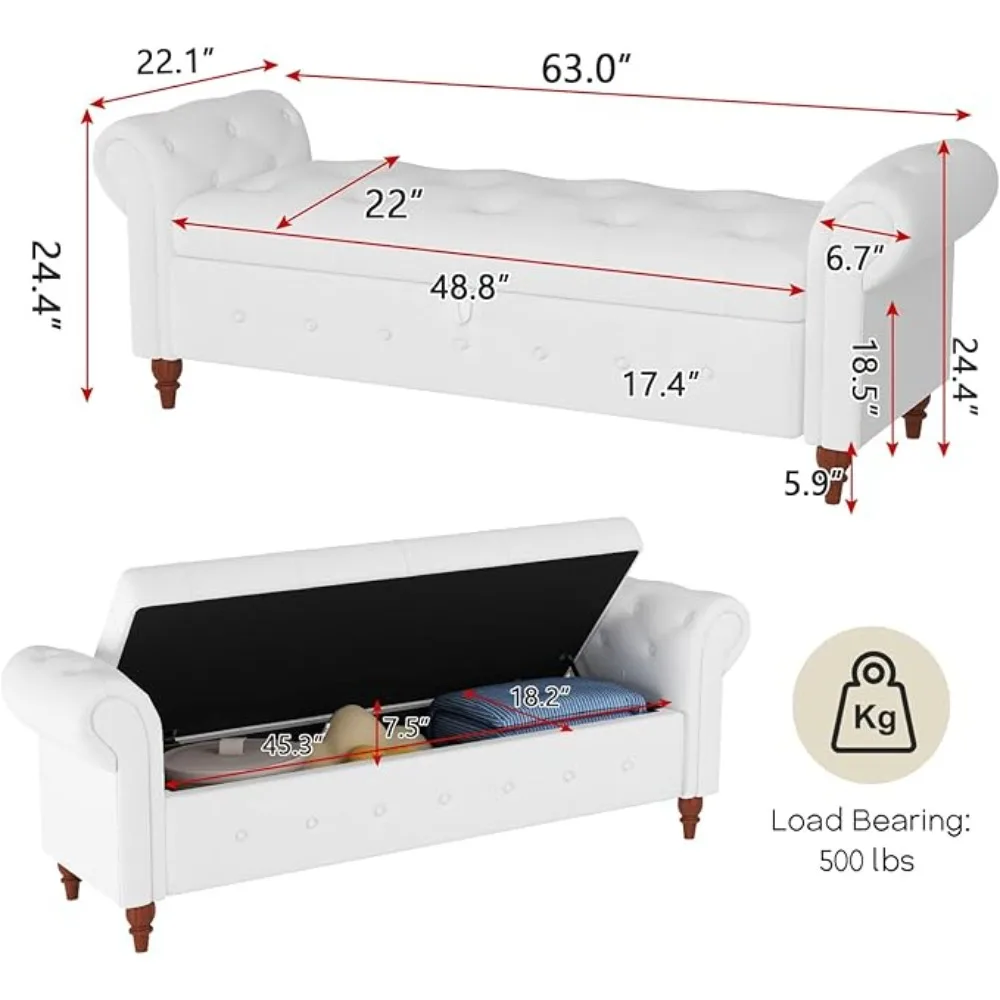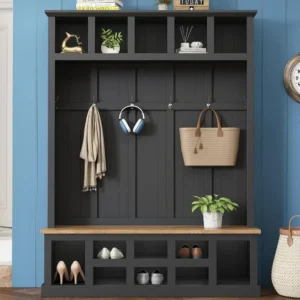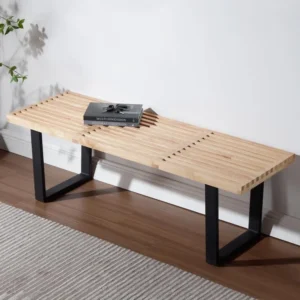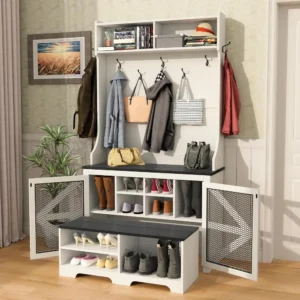The Evolution of Entryway Design: Why It Matters
Your entryway sets the tone for your entire home. It’s the first space guests encounter and the last impression they take with them when they leave. More importantly, it’s the transition zone between the outside world and your personal sanctuary—a space that deserves thoughtful design consideration.
Over the decades, entryway design has transformed dramatically. Traditional homes once featured formal foyers primarily meant to receive guests, with little emphasis on style or personality. Today, the modern entryway serves multiple purposes: it’s a functional drop zone, a style statement, and an introduction to your home’s overall design language.
This evolution reflects our changing lifestyle needs. With the rise of open-concept living, entryways have become more integrated with the rest of the home, requiring them to be both practical and visually cohesive. Studies show that well-designed entryways can actually increase perceived home value by up to 5%, highlighting their growing importance in contemporary home design.
Modern entryway design embraces “intentional design”—the careful selection of elements that balance form and function rather than treating the space as an afterthought. From multifunctional furniture to strategic lighting, today’s entryways showcase how modern bench styles for small spaces and other thoughtfully chosen pieces can transform what was once merely a passage into a purposeful design statement.
Key Entryway Furniture Trends Transforming Modern Homes
Sculptural Statement Pieces: Making Bold First Impressions
Today’s entryways are moving beyond purely functional setups toward incorporating artistic elements that command attention. Statement furniture serves as both a practical necessity and a sculptural focal point, establishing your design sensibility from the moment someone walks through the door.
These conversation-starting pieces help establish your home’s design language immediately:
- Console tables featuring asymmetrical designs, unexpected silhouettes, or innovative material combinations
- Oversized mirrors with architectural frames that function as wall art
- Dramatic lighting pendants and sconces that create visual interest even in small spaces
- Unique seating options that prioritize unusual forms while remaining functional
The key to incorporating statement pieces successfully lies in balance. Even the most artistic entryway hall tree can combine show-stopping design with practical storage solutions. This approach allows everyday necessities to become design features rather than items to hide away.
Curved Forms and Organic Shapes: Softening Modern Spaces
After years of boxy, angular furniture dominating modern design, we’re seeing a significant shift toward softer, more organic forms in entryway furniture. These curved elements create visual interest and bring a sense of comfort to what can otherwise feel like austere contemporary spaces.
Fluid, organic shapes evoke the natural world and create a subtle psychological effect. Research suggests that rounded forms can actually reduce stress levels compared to environments filled with sharp angles and hard edges. This makes curved furniture particularly suitable for entryways, which should welcome you home and help you decompress.
The curved trend appears across all entryway elements:
– Console tables with gently curved legs or scalloped edges
– Round or oval mirrors instead of rectangular ones
– Benches featuring soft arcs and flowing lines
– Circular or irregularly shaped rugs that break the expected visual pattern
These softened elements pair beautifully with contemporary architecture, creating pleasing contrast that prevents modern spaces from feeling cold or impersonal. Incorporating modern entry bench decor ideas that feature curved forms can instantly update your entryway’s look while maintaining its welcoming feel.
Multifunctional Storage Solutions: Practicality Meets Design
Today’s homes demand furniture that works harder and smarter. Nowhere is this more apparent than in modern entryway design, where limited space must accommodate multiple needs. The latest trend embraces multifunctional pieces that combine style with clever storage solutions.
Modern entryway furniture now routinely incorporates:
- Bench seating with concealed storage compartments for seasonal items
- Console tables featuring drawers, shelves, and even integrated charging stations
- Wall-mounted systems combining hooks, shelves, and cabinets in streamlined designs
- Slim vertical storage units that maximize space in narrow entryways
These multifunctional pieces allow homeowners to maintain a clean, uncluttered look while providing dedicated places for everyday essentials. The best designs hide the utilitarian aspects behind beautiful exteriors, ensuring that practicality doesn’t come at the expense of style.
For homes with limited square footage, investing in entryway bench storage solutions offers the dual benefits of seating and organization—a perfect example of how contemporary design is addressing real-life needs while maintaining aesthetic standards.
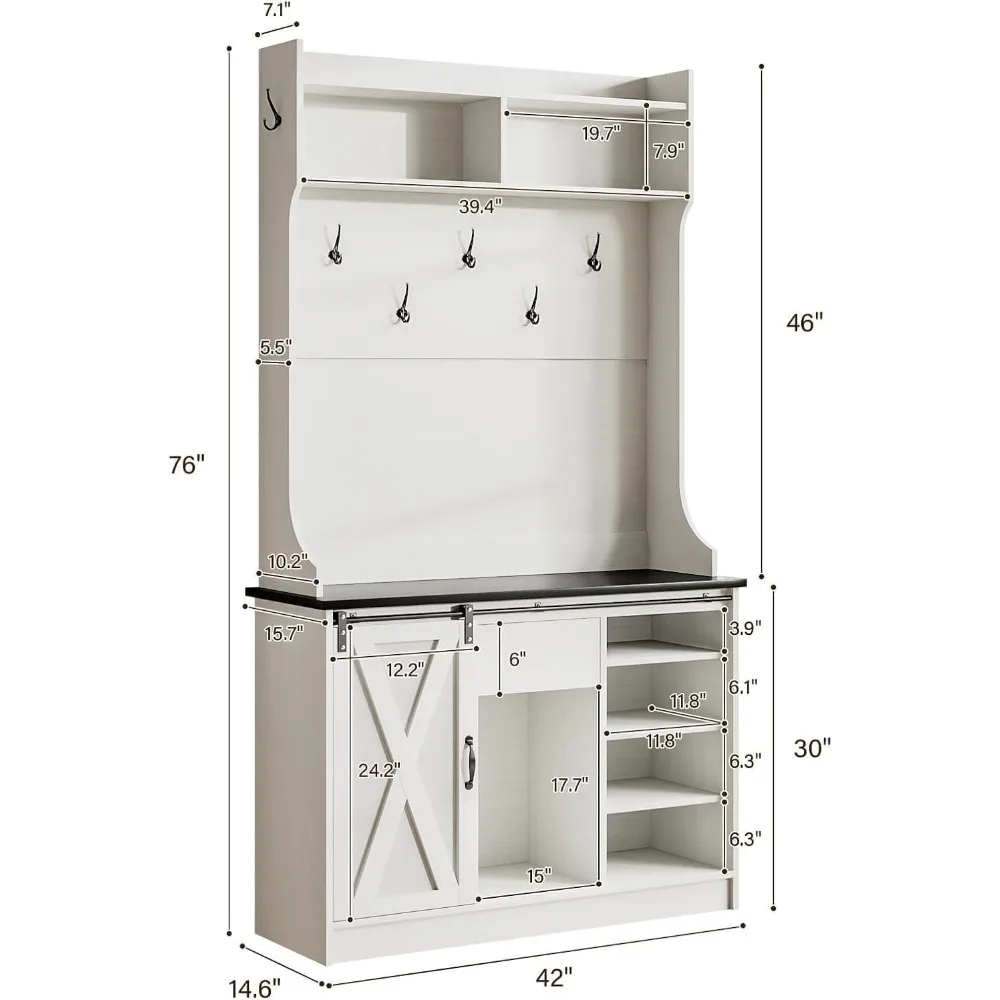
Natural Materials and Biophilic Elements: Bringing the Outdoors In
The biophilic design movement—which seeks to connect building occupants with the natural environment—has made a significant impact on entryway furniture trends. Today’s homeowners are increasingly drawn to natural materials that create a sense of connection to the outdoors while promoting wellbeing.
Popular woods being used in contemporary entryway furniture include:
- Oak: Known for its durability and distinctive grain patterns
- Walnut: Prized for its rich, dark tones and elegant appearance
- Mango wood: A sustainable option with unique color variations
- Bamboo: Fast-growing and environmentally friendly with a distinctive look
Beyond wood, other natural elements are finding their way into entryways through stone-topped consoles, marble accents, and textiles made from natural fibers. These materials not only look beautiful but often age gracefully, developing character over time.
The incorporation of plants—from small potted varieties on console tables to larger statement plants in corners—further enhances the biophilic quality of modern entryways. These living elements improve air quality while adding color and vitality to the space.
For those seeking to embrace this trend, wood entryway bench options showcase the natural beauty of sustainable materials while providing functional seating and sometimes storage.
Minimalist Designs with Warmth: Balancing Simplicity and Comfort
Minimalism continues to influence modern entryway design, but today’s interpretation has evolved beyond stark, clinical spaces. “Warm minimalism” maintains clean lines and clutter-free surfaces while incorporating elements that add comfort and approachability.
This approach embraces simplicity without sacrificing personality, often drawing inspiration from Japandi design—a fusion of Japanese minimalism and Scandinavian comfort. The result is entryways that feel simultaneously organized and inviting.
Key elements of warm minimalism include:
- Simple furniture with thoughtful details like rounded edges or subtle texture
- Limited but carefully selected decorative objects with personal meaning
- Natural materials that add visual warmth to clean-lined designs
- Strategic use of textiles to soften hard surfaces
The beauty of this trend lies in its accessibility and adaptability. Even small entryways can incorporate minimal benches for contemporary spaces without feeling crowded, as these streamlined pieces take up less visual space while still providing necessary function.
Dramatic Lighting as Functional Art: Illuminating Modern Entrances
Lighting has transcended its utilitarian role to become a central design element in modern entryways. Today’s trend-forward homes feature lighting fixtures that function as artistic focal points while providing necessary illumination.
The most effective entryway lighting strategies employ a layered approach:
- Statement overhead fixtures (pendants, chandeliers) that establish style and provide ambient light
- Wall sconces that add dimension and create a welcoming glow
- Table lamps on consoles that offer adjustable task lighting
- Accent lighting that highlights architectural features or artwork
These fixtures often showcase contemporary design trends in their own right—think sculptural pendants with organic forms, geometric metal chandeliers, or sconces with artistic silhouettes. Because lighting doesn’t consume floor space, it’s an ideal way to add drama to entryways of any size.
Smart lighting systems have also gained popularity, allowing homeowners to adjust brightness and even color temperature to create different moods or accommodate changing needs throughout the day.
Rich Color Palettes: Moving Beyond Neutrals
While white, beige, and gray have dominated modern interiors for years, today’s entryways are embracing richer, more expressive color palettes. Bold hues create memorable first impressions and set the emotional tone for the rest of the home.
Current color trends include:
- Deep, moody blues and greens that create sophistication and calm
- Earthy terracottas and clay tones that add warmth and grounding energy
- Jewel tones like emerald or sapphire that create luxury and drama
- Warm neutrals that offer sophistication beyond basic beige
Color drenching—applying one color across walls, trim, and even furniture—has become particularly popular in entryways, creating cohesive, immersive spaces that make a strong statement. For those hesitant to commit to colorful walls, furniture pieces in rich hues provide an easier way to incorporate this trend.
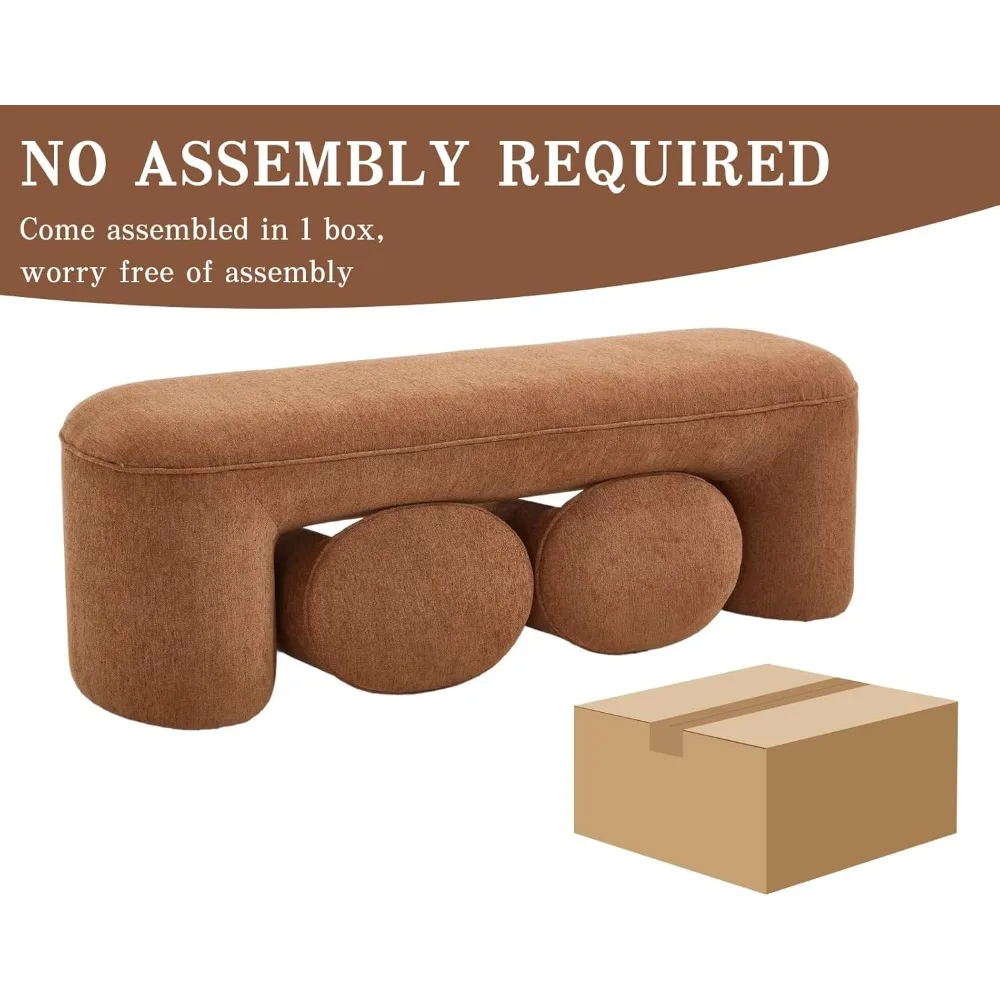
Textured Elements and Mixed Materials: Adding Depth and Character
Texture has become as important as color in creating visually interesting entryways. Contemporary design embraces tactile surfaces and material combinations that add dimension and sophistication to even the simplest spaces.
Today’s most compelling entryway designs incorporate:
- Contrasting material pairings (wood with metal, glass with stone, etc.)
- Textural wall treatments such as fluted panels, grasscloth, or dimensional tile
- Tactile textiles including bouclé, wool, or handwoven natural fibers
- Visual texture through patterned rugs or accessories with dimensional details
These textural elements create a multisensory experience, inviting touch while adding visual complexity. Even in minimalist designs, texture prevents spaces from feeling flat or sterile.
For smaller entryways, incorporating modern seating for small foyers with interesting textural elements—like a bench with a woven seat or upholstered in nubby fabric—adds both function and sensory appeal without overwhelming the space.
Essential Furniture Pieces for a Modern Entryway
Creating a well-designed entryway requires thoughtful selection of key furniture elements. While specific needs vary based on your space and lifestyle, these core pieces form the foundation of most successful entryway designs:
Console Tables: The anchor of many entryways, console tables should be proportional to your wall space (generally 30-36” high and 10-15” deep). Look for designs with at least one storage drawer for keys and small items. Position approximately 2-3 feet from the door to create a landing zone.
Seating: Even small entryways benefit from some form of seating. Options include:
– Storage benches that offer hidden compartments for shoes
– Slim stools that can tuck completely under consoles
– Accent chairs for larger foyers where space allows
Mirrors: Essential for last-minute checks and for bouncing light, mirrors should be positioned at eye level and sized proportionally to your wall space. Circular mirrors soften rectangular entryways, while large vertical mirrors can make low ceilings appear taller.
Storage Solutions: Beyond furniture with built-in storage, consider:
– Wall-mounted hook systems for coats and bags
– Slim shoe cabinets that close to conceal contents
– Baskets or bins that corral smaller items while adding texture
Lighting: Proper illumination transforms your entryway from functional to welcoming. Ceiling height should determine fixture selection, with pendants hanging 7 feet above the floor in standard-height entryways.
The most successful modern entryways combine these elements in proportions appropriate to the space. For inspiration on pulling these pieces together cohesively, exploring entryway furniture ideas for modern homes can help you visualize how different elements work together.
Designing for Different Entryway Spaces: Solutions for Every Home
Small Space Entryway Solutions: Maximizing Limited Square Footage
Compact entryways present unique design challenges but can become stylish, functional spaces with strategic planning. The key is selecting appropriately scaled furniture and embracing vertical space.
For tight entryways, consider these space-maximizing strategies:
- Choose console tables no deeper than 10-12 inches to maintain proper clearance
- Opt for wall-mounted options that free up floor space while providing function
- Utilize vertical wall space with hooks, shelves, or cabinets stacked above bench seating
- Select furniture with visible legs to create a sense of openness and airflow
Visual tricks can also make small entryways feel more spacious:
– Position mirrors to reflect light and create depth
– Keep color schemes light or monochromatic to avoid visual fragmentation
– Use transparent or reflective materials that don’t weigh down the space
– Choose furniture with hidden or streamlined storage to reduce visual clutter
For particularly challenging spaces, narrow entryway bench options designed specifically for tight quarters offer seating and sometimes storage without impeding traffic flow.
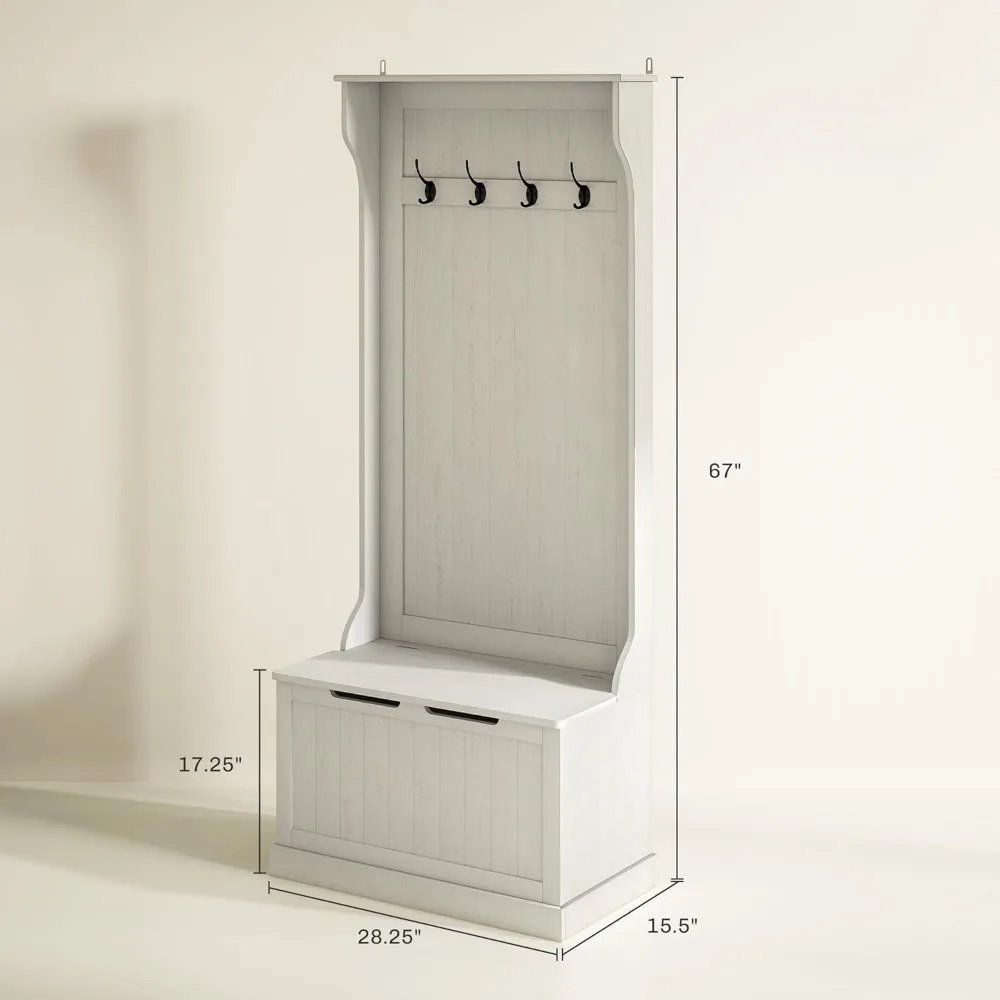
Open Concept Entryway Design: Creating Definition Without Walls
Open-concept homes present the opposite challenge: defining an entryway where no architectural boundaries exist. Without walls to delineate spaces, furniture placement and design elements must work harder to create distinction.
Effective strategies for creating visual boundaries include:
- Position a console table perpendicular to the wall to create a partial divider
- Use area rugs to define the entryway zone distinct from adjacent living spaces
- Create visual separation through lighting focused specifically on the entry area
- Employ color blocking or material changes to signal transitions between spaces
The furniture selected for open concept entryways should relate aesthetically to adjacent rooms while maintaining its own identity. This balance ensures the entry feels connected to the home while still serving its distinct purpose.
For homeowners struggling with layout questions, exploring apartment open entry furniture layouts can provide practical guidance on creating definition in these challenging spaces.
Entryway Bench with Back, Modern Entryway Bench, Shoe Bench for Entryway
Price range: $463.13 through $474.44 Select options This product has multiple variants. The options may be chosen on the product pageCorner Entryway Bench, Entryway Bench with Cushion, Modern Entryway Bench, Shoe Bench for Entryway
$476.34 Select options This product has multiple variants. The options may be chosen on the product pageBench with Hooks and Storage, Entryway Hall Tree, Mudroom Bench with Cubbies, Mudroom Bench with Shoe Storage
$818.38 Select options This product has multiple variants. The options may be chosen on the product pageModern Entryway Bench, Wood Entryway Bench, Wood Mudroom Bench
$497.69 Select options This product has multiple variants. The options may be chosen on the product pageEntryway Coat Rack Bench, Entryway Hall Tree, Farmhouse Mudroom Bench, Mudroom Bench with Shoe Storage
$805.09 Select options This product has multiple variants. The options may be chosen on the product pageBench with Hooks and Storage, Entryway Coat Rack Bench, Entryway Hall Tree, Mudroom Bench with Shoe Storage, Mudroom Coat Rack Bench
$793.73 Select options This product has multiple variants. The options may be chosen on the product page
Sustainable and Eco-Conscious Entryway Choices
Sustainability has moved from niche concern to mainstream consideration in furniture selection. Today’s environmentally conscious consumers are seeking entryway pieces that minimize environmental impact without sacrificing style.
Key sustainable approaches gaining popularity include:
- FSC-certified wood furniture, ensuring materials come from responsibly managed forests
- Reclaimed wood pieces that give new life to existing materials
- Furniture made from rapidly renewable resources like bamboo or rattan
- Products finished with low-VOC or water-based finishes that improve indoor air quality
Beyond materials, sustainability in entryway furniture also encompasses longevity and versatility. Pieces designed to last for decades—both structurally and aesthetically—reduce the need for replacement and minimize waste. Similarly, adaptable designs that can serve multiple functions or move between different rooms extend furniture lifespan.
Many furniture brands now highlight their environmental practices, making it easier for consumers to make informed choices. Looking for specific certifications like FSC, Greenguard, or Cradle to Cradle can help identify genuinely sustainable options among marketing claims.
Practical Tips for Implementing Modern Entryway Trends
Assess your specific entryway needs: Before purchasing new furniture, evaluate how you actually use your entry space. Track patterns for two weeks, noting what items accumulate, where bottlenecks occur, and what functionality is lacking.
Measure carefully—twice: Nothing derails entryway design like furniture that’s improperly scaled. Ensure adequate clearance (at least 36 inches) for comfortable passage and door swing. Note ceiling height for lighting fixtures and wall dimensions for mirrors.
Start with one statement piece: Rather than trying to incorporate every trend at once, select one focal element—perhaps a distinctive bench or dramatic lighting fixture—and build around it with complementary pieces.
Layer in trends gradually: Incorporate trend elements through accessories first—pillows, art, or decorative objects—before committing to larger furniture investments. This allows experimentation with minimal financial risk.
Consider traffic patterns and durability: Entryways endure heavy use. Choose materials and finishes that withstand dirt, moisture, and frequent contact. Performance fabrics, sealed woods, and washable rugs offer style without sacrificing practicality.
Balance open and closed storage: While open storage provides easy access, closed storage prevents visual clutter. Aim for a combination that suits your organizational style and the items you typically store.
How to Personalize Your Modern Entryway: Creating a Unique Welcome
While trends provide valuable inspiration, the most successful entryways reflect personal style and tell your unique story. Personalization transforms a well-designed space into one that feels authentically yours.
Consider incorporating meaningful elements like:
- Family photographs or artwork in contemporary frames that complement your design scheme
- Travel souvenirs displayed thoughtfully rather than as clutter
- Heritage items that connect to your cultural background or family history
- Seasonal elements that can be rotated to keep the space feeling fresh
Personal expression needn’t sacrifice style. By selecting items that have both meaning and aesthetic appeal, and displaying them with intention, your entryway can be both on-trend and deeply personal.
Color choices offer another opportunity for personalization. While trending colors provide guidance, selecting hues that resonate with you emotionally ensures your space feels authentic rather than simply fashionable.
Balancing Form and Function: Creating an Entryway That Works
The most successful modern entryways achieve harmony between beautiful design and practical functionality. This balance ensures the space looks impressive while actually supporting your daily life.
Consider these practical aspects when implementing design trends:
- If you live in a wet climate, prioritize water-resistant materials and incorporate umbrella storage
- Families with children might need lower hooks, sturdier materials, and more robust storage solutions
- Pet owners benefit from specialized storage for leashes and easy-to-clean surfaces
- Those with mobility concerns should ensure adequate clearance and seating at accessible heights
Ultimately, even the most beautiful entryway fails if it doesn’t function for your specific needs. The latest trend toward sleek benches for modern entryways can be adapted to various lifestyle requirements without sacrificing style—proof that today’s designs increasingly recognize that true luxury lies in spaces that work as beautifully as they look.
By thoughtfully selecting furniture and accessories that align with both current trends and your personal needs, your entryway can create that perfect first impression while seamlessly supporting your daily routines.

